Journal
Research Trip: Alternative Ways to Contemporaneity
Erin Li
Curatorial Fellow,
Whitechapel Gallery
For most of my time at Whitechapel Gallery as Asymmetry Curatorial Fellow, I have been working closely with Laura Smith and Candy Stobbs on an exhibition about the global story of women artists who worked in the style of gestural abstraction from the 1940s to 1970s. It is an ambitious project with the aim to expand the male-centric and Western-centric narrative of Abstract Expressionism. A fascinating new world unfolds in the process, as I was much more familiar with curating contemporary art rather than post-war art before.
To better plan this touring exhibition with one of our partners, Fondation Vincent van Gogh Arles, the Whitechapel Gallery curatorial team went on an intense business and research trip to the South of France. Our visit to a wide range of art spaces refreshed my thinking on how to make an exhibition 'contemporary' when the artworks date back decades or even centuries.
ECLECTIC DISPLAY STRATEGIES
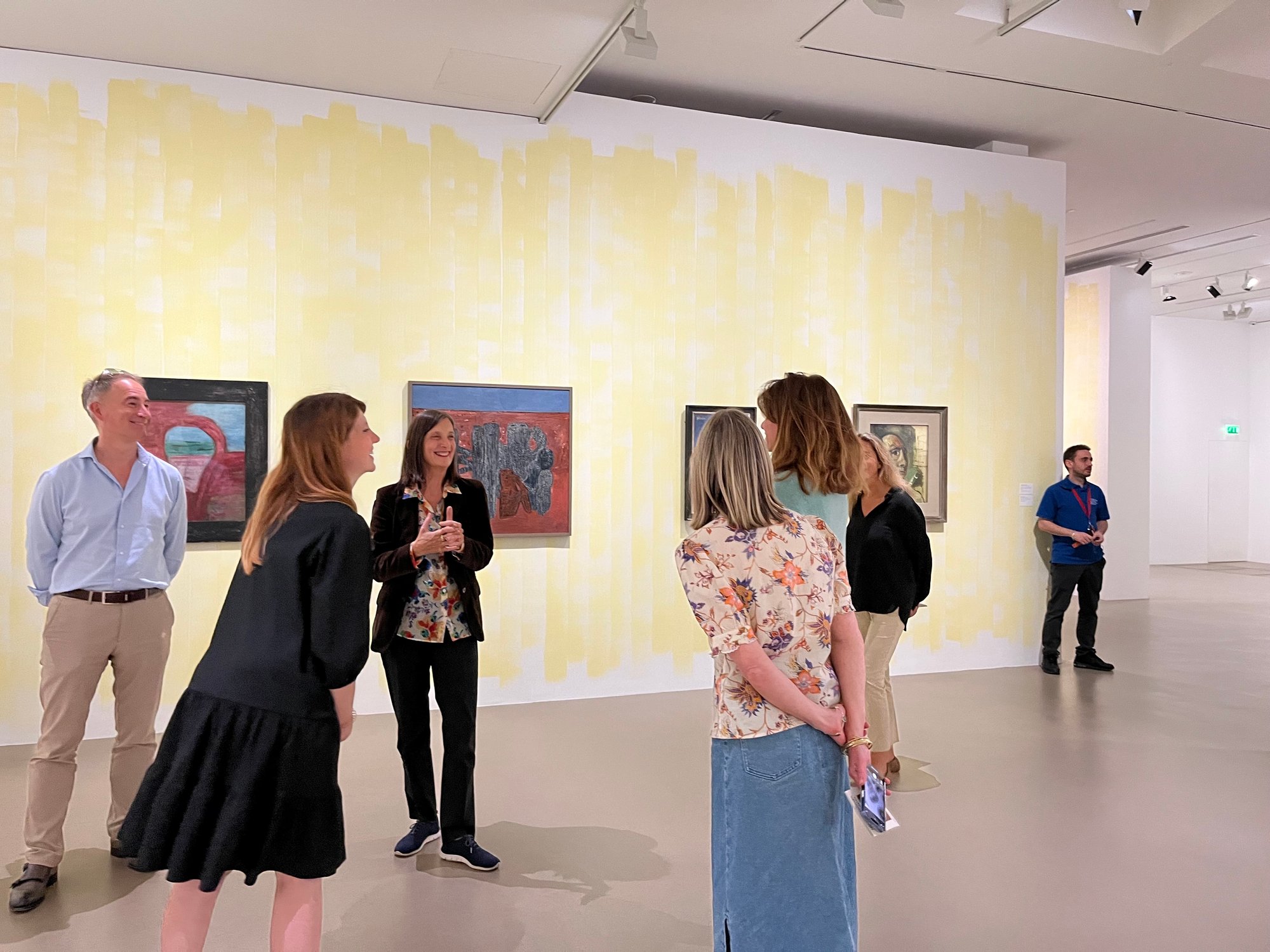
Director Bice Curiger and Associate Curator Julia Marchand introducing Nicole Eisenman and the Moderns. Heads, Kisses, Battles at Fondation Vincent van Gogh Arles. Image courtesy of Erin Li.
Yellow walls. Yellow walls in loose, painterly brushstrokes. They are used throughout the exhibition, titled Nicole Eisenman and the Moderns. Heads, Kisses, Battles at Fondation Vincent van Gogh Arles to mark the walls housing modern paintings from early 20th century, as opposed to those where Nicole Eisenman’s recent works are hung. More than a strategy to visually light up the two-floor space, yellow walls in this particular showcasing highlight the curatorial idea of cross-century conversations as well as the textures of many paintings on show.
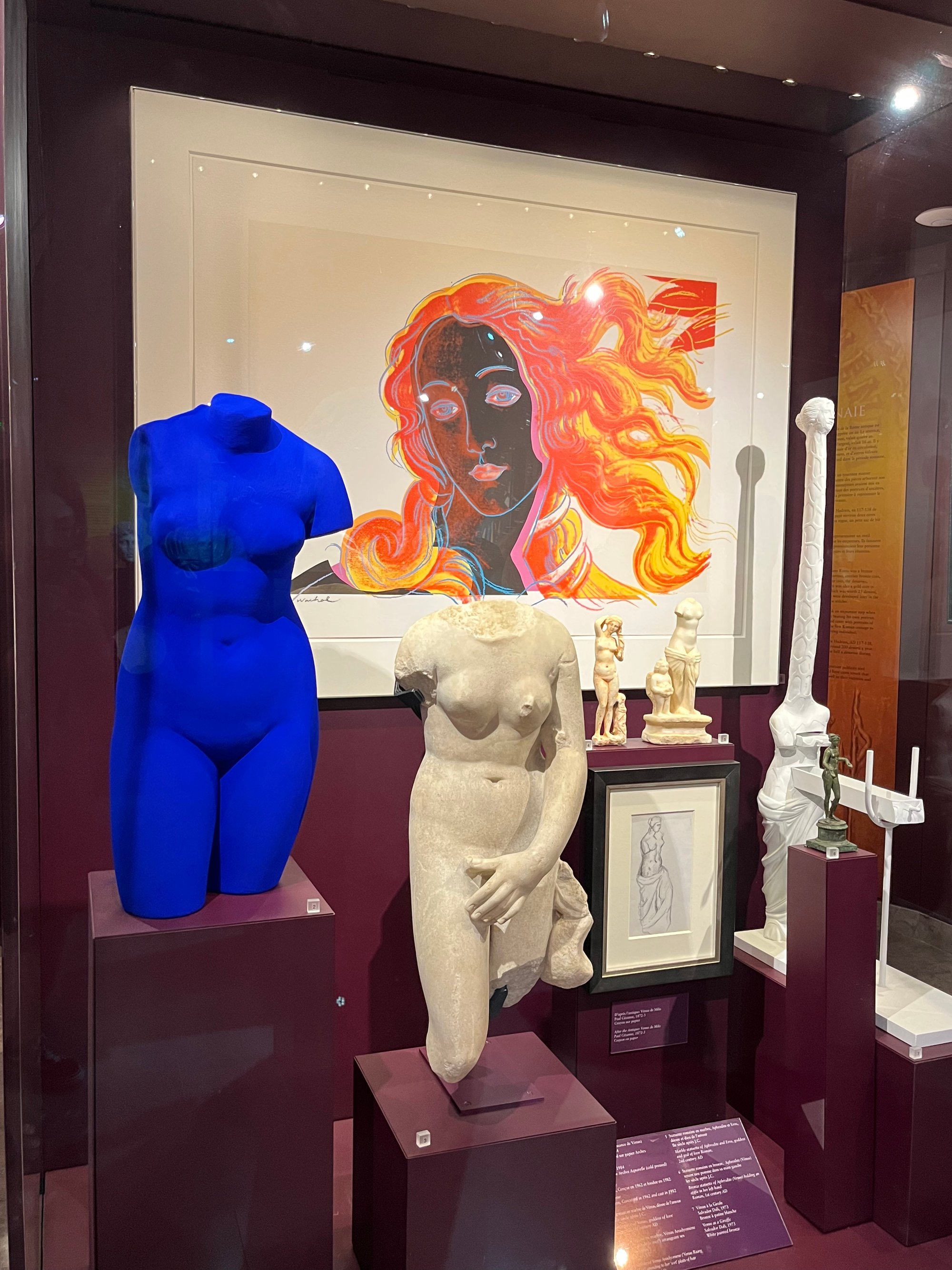
The most photographed vitrine at the Mougins Museum of Classical Art, according to Founder Christian Levett. Image courtesy of Erin Li.
We also travelled to the village Mougins to visit the Mougins Museum of Classical Art, a compact showcase of Christian Levett’s eclectic collection ranging from Roman armour, Egyptian sculptures, to Celtic coins. Rather than sticking strictly to geographical and chronological displays, the museum team interspersed ancient artifacts with classically inspired artworks from the recent centuries, such as Blue Venus by Yves Klein. Storytelling boards and interactive touchscreens further animate the visiting experience.
HOSPITALITY AND SUSTAINABILITY
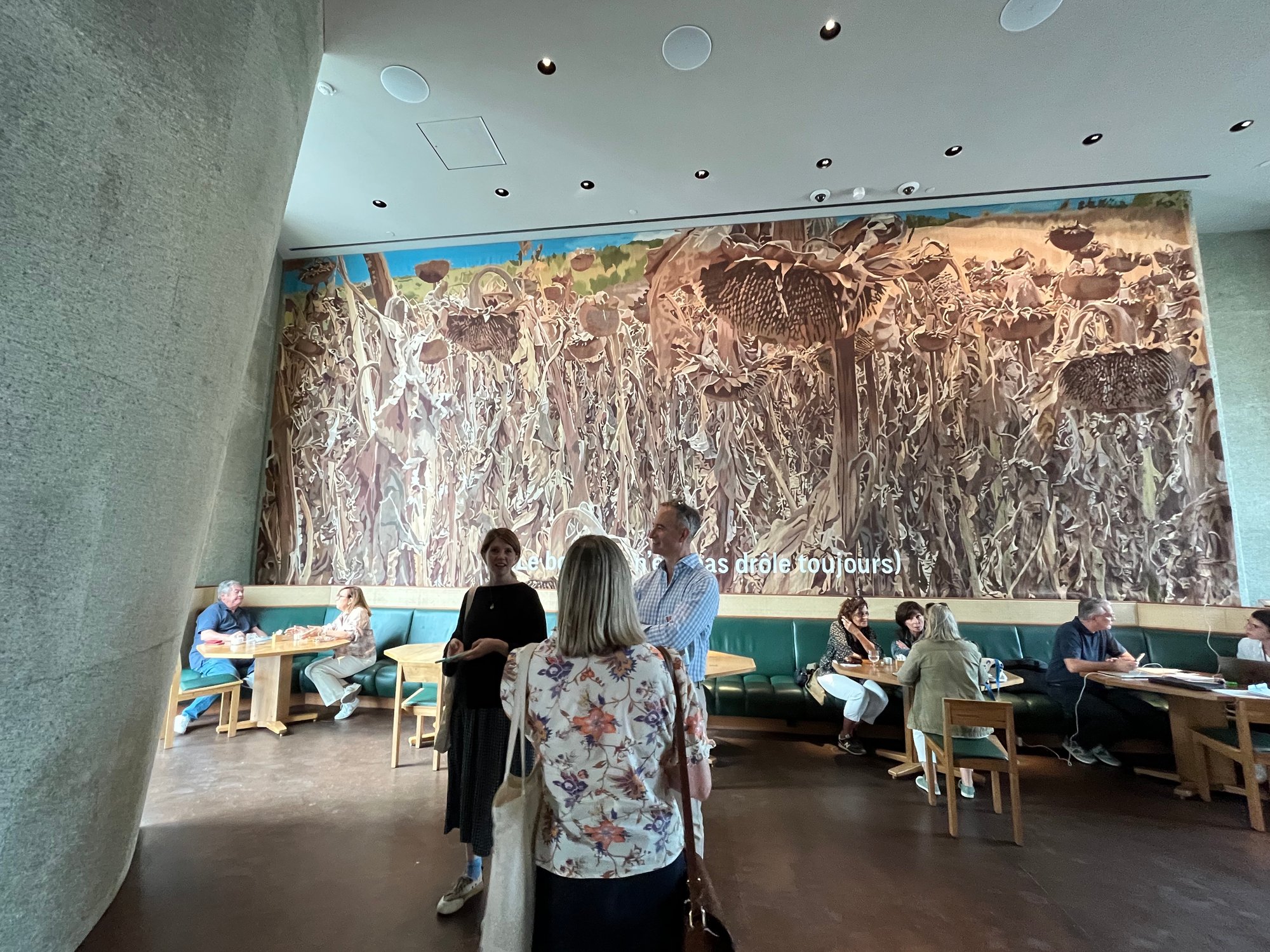
Drum Café, LUMA Arles. Image courtesy of Erin Li.
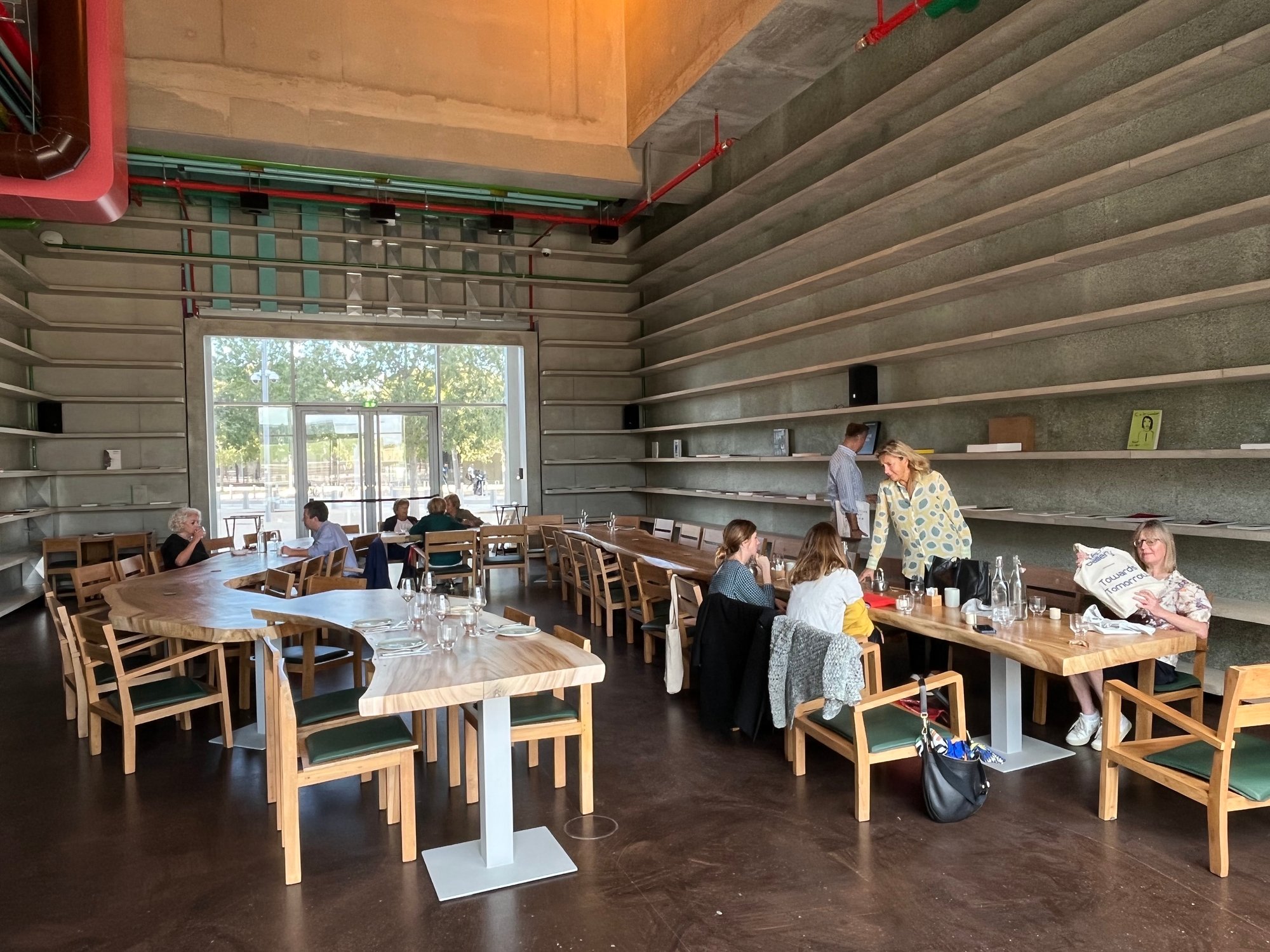
Drum Café, LUMA Arles. Image courtesy of Erin Li.
All meetings with the Fondation Vincent van Gogh team took place over lovely meals in relaxed settings. My favorite was undoubtedly the one at Drum Café in LUMA Arles, a sprawling creative campus for artistic creation, collaboration, and presentation. With this in mind, Artist Rirkrit Tiravanija conceptualized Drum Café as a live-in artwork. Working closely with Atelier LUMA, a design and research lab in the same campus, Tiravanija utilized natural resources from the region, such as excess sunflower pulp for wall cladding and natural dye for the monumental sunflower tapestry covering the main wall. Instead of 'preserving' the artwork to maintain the appearance, he happily allows the tapestry to gradually shift color as it ages over years.
Echoing the warm textures of the sunflower pulp walls and wool tapestry, a long strand of wooden table meandering around the café gives off a communal vibe, which reminds me of literati gatherings alongside rivers in ancient China. Places of hospitality and conviviality give art spaces so much life.
PUBLICATION AS AFTERLIFE
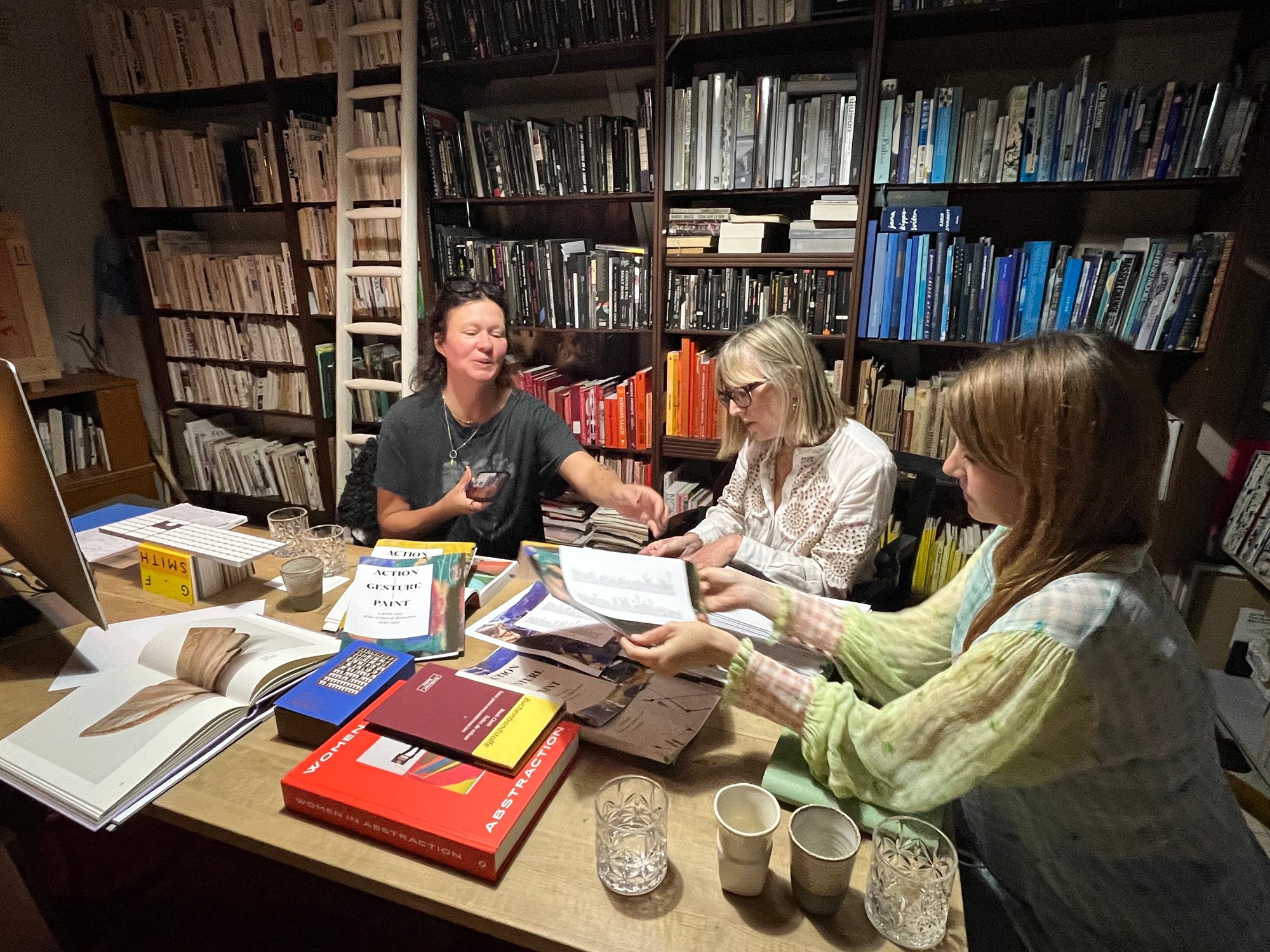
Meeting at graphic designer Kajsa Ståhl’s studio. Image courtesy of Erin Li.
The process of creating a substantial publication to accompany the exhibition also excites me tremendously. Since both the curatorial team and the graphic designer Kajsa Ståhl are tired of old-fashioned art history textbooks cast in the same mould, Kajsa referenced many progressive, contemporary catalogues and proposed layouts of very refreshing size, font, and paper choices. We imagine the book not just as academic research reference, but also as an intimate, beautiful companion on the bedside table. After all, in such times of crises, we could perhaps all use some expressionistic art before bed.